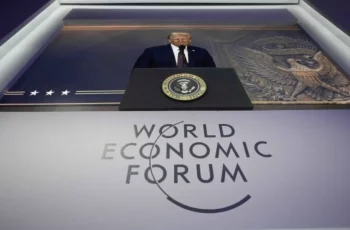
After his victory at the presidential elections, the Republican President now promises US citizens much more money in their wallet, confidence in the future and stable earnings. However, how much will his initiatives cost the people of the United States?
The choice of Americans was determined by several factors: high inflation, rampant crime, endless rising food prices and uncertainty about the future. Donald Trump is like a SuperHero who is called upon to help all those who find themselves in a tight life situation. However, his extremely bold promise could turn into a serious problem for the 78-year-old president. After all, the plans he has outlined may lead to an even greater price increase. What does Donald Trump plan to achieve in the economic policy?
During his election campaign, the once-and-future president repeatedly said that he would try to follow a protectionist course in his economic policy. First of all, it will mean the introduction of tariffs on goods from China. In trade with this Asian country, Trump plans to increase protective trade barriers to 60 percent. For other countries, tariffs will increase to 20 percent All of them will be paid upon passing through customs control when a company or consumer in the United States purchases goods from abroad. The businessman-politician is confident that this will encourage American companies to produce more again. This will stimulate the economy and create new jobs. In a way, this is a continuation of his first-term policy.
To be fair, Joe Biden, who also advocated protecting American manufacturers from Chinese manufacturers’ prices being too low, and supported Trump’s levies on trade with China. Moreover, he introduced new tariffs, for example, for electric vehicles. However, there is still a difference between the approach of the two politicians: the tariffs that Trump claims to introduce will be much more ambitious.
Many experts make predictions that such a policy can lead to unreasonably high price increases. For the most part, this is because goods cannot be brought from abroad fairly quickly. Import duties will increase their costs, and companies, unwilling to incur losses, will shift all the costs incurred to consumers. Moreover, there is a chance that European countries will respond with similar tariffs. China will do the same. This will have a negative impact on American companies, which also produce a lot of products for export.
In addition to imposing high tariffs, Trump plans to see to how effective the tax preferences he introduced during his first term worked. They will expire soon, but the president has already announced, to the delight of business, that he will extend them. He does not rule out a further reduction in income tax. However, one of his main promises – the tax–free tips and overtime payments – can be quite difficult to pull off. It is necessary to understand how the service sector works in the United States: the wages of workers in this field are so low that tips sometimes make up a very significant part of their wages. The Republican promised a certain gift to pensioners: they will no longer have to pay taxes on their pension payments.
Supporters of Donald Trump hope that the tax cuts will be offset by the economic recovery. The package of measures conceived by Trump will work only if all its stages are successful. To say one hundred percent that his plan is certain to be successful is to go against common sense: the US economy is too problematic today. Given that an increase in tariffs will lead to an increase in the cost of foreign-made goods, and all costs will be borne by consumers, it is impossible to say that America expects an economic recovery. Rather, on the contrary, the national debt will increase again. Taking into account that the US national debt has already exceeded 36 trillion dollars, Trump’s tax plans are quite capable of increasing the US debt by 7.5 trillion dollars over the next decade. A similar assessment of his plans was put forward by the non-partisan tax organization Committee for a Responsible Federal Budget.
Another problem that Donald Trump may well face is the implementation of his election promise to expel all illegal migrants from the country. It’s a good idea, but how will he implement it? The president believes that this will help to cope with the shortage of housing and the ever-increasing rent. However, the reality is that illegal migrants work in a wide variety of spheres and thus support the country’s economy. This includes catering, construction, and agriculture. If they suddenly disappear, it will lead to a shortage of labor, which there will be nothing to fill. Migrants are good because they are willing to work for lower wages in not the best conditions. Americans would never do that. All costs incurred by the company will be shifted onto the shoulders of consumers. Eventually, labor costs will rise, as well as the cost of services and goods, and all Trump’s attempts to lift the American economy from its knees will sink into oblivion.










Comments